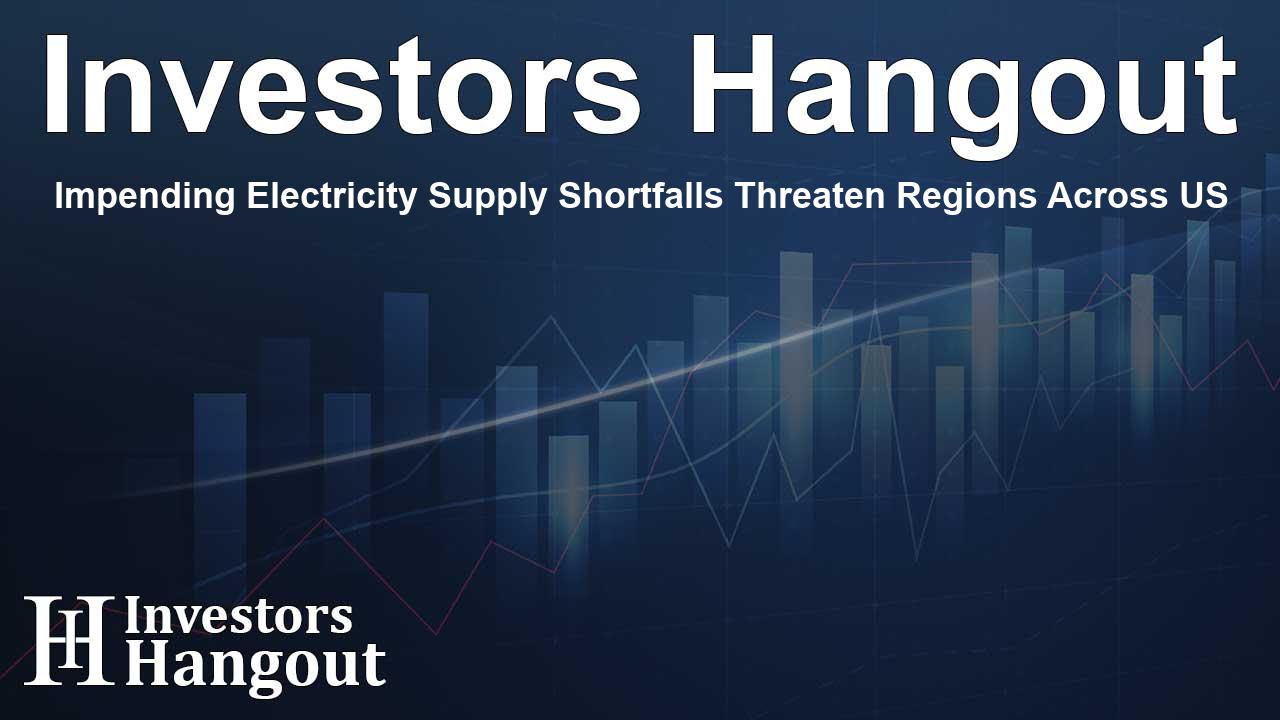Impending Electricity Supply Shortfalls Threaten Regions Across US

Significant Power Supply Risks in the United States
Recent assessments from the North American Electric Reliability Corporation (NERC) disclose alarming projections about power supply in the United States for the next decade. Approximately half the nation faces heightened risks of electricity shortfalls, which could result in outages and necessitate conservation efforts.
Rising Power Demand
As power consumption soars due to increasing demands from artificial intelligence (AI) data centers and the electrification of both buildings and transportation, the push to augment electricity generation has not kept pace. Consequently, an imbalance in supply and demand is intensifying. This information was highlighted in NERC's annual Long-Term Reliability Assessment.
Comments from Experts
John Moura, the director of NERC’s Reliability Assessment and Performance Analysis, emphasizes, "We are witnessing demand growth unprecedented in recent decades. Our existing infrastructure is unable to expand quickly enough to accommodate this rising demand."
Vulnerabilities Across Various Regions
The Midcontinent Independent System Operator, responsible for managing the electrical grid across 15 states, is identified as being particularly susceptible to power shortfalls even under typical peak demand scenarios. Further, NERC reports that other grid operators—including PJM Interconnection, ISO New England, and those in Texas and California—also face elevated risks. However, regions in the northwest, northeast, southeast, and midwest seem to be in a somewhat better position to maintain reliable electricity supply over the long term.
Contributing Factors to High-Risk Areas
The rapid growth in electricity demand significantly affects the regions identified as high-risk. This situation is compounded by planned retirements of fossil-fueled power plants which are scheduled to go offline before new renewable energy sources can be brought online.
Power Plant Retirements and Capacity Loss
NERC's findings reveal that a staggering 78 gigawatts of generation capacity are confirmed for retirement, with an additional 37 gigawatts listed under announced plans for retirement by 2034. These losses represent a substantial reduction in the overall generating capacity.
Understanding Capacity Dynamics
To put this into perspective, one gigawatt of capacity has the potential to supply power to as many as one million U.S. homes. Therefore, the anticipated capacity losses underscore the vulnerability of the electric grid and the risks associated with increased power demands.
NERC’s Role in Grid Management
The North American Electric Reliability Corporation serves a crucial role as a nonprofit regulator within North America. Its primary focus is developing industry standards, conducting assessments, and forecasting reliability and security issues related to the electric grid.
Frequently Asked Questions
What is causing the anticipated power shortages?
The anticipated power shortages are primarily due to rising electricity demand from technological advancements and insufficient capacity expansion to meet this demand.
How many gigawatts of power generation are set for retirement?
NERC reports that 78 gigawatts of confirmed generation retirements exist, alongside an additional 37 gigawatts with announced plans for retirement by 2034.
Which regions are most at risk of power shortages?
Regions managed by the Midcontinent Independent System Operator, PJM Interconnection, and others in Texas and California are identified as having high shortfall risks, especially during extreme weather conditions.
What role does NERC play in the power supply landscape?
NERC is a critical nonprofit regulator that establishes industry standards and assesses reliability and security within the electric grid to mitigate risks.
How much capacity does one gigawatt of energy provide?
One gigawatt of capacity can provide electricity to approximately one million homes in the United States.
About Investors Hangout
Investors Hangout is a leading online stock forum for financial discussion and learning, offering a wide range of free tools and resources. It draws in traders of all levels, who exchange market knowledge, investigate trading tactics, and keep an eye on industry developments in real time. Featuring financial articles, stock message boards, quotes, charts, company profiles, and live news updates. Through cooperative learning and a wealth of informational resources, it helps users from novices creating their first portfolios to experts honing their techniques. Join Investors Hangout today: https://investorshangout.com/
Disclaimer: The content of this article is solely for general informational purposes only; it does not represent legal, financial, or investment advice. Investors Hangout does not offer financial advice; the author is not a licensed financial advisor. Consult a qualified advisor before making any financial or investment decisions based on this article. The author's interpretation of publicly available data shapes the opinions presented here; as a result, they should not be taken as advice to purchase, sell, or hold any securities mentioned or any other investments. The author does not guarantee the accuracy, completeness, or timeliness of any material, providing it "as is." Information and market conditions may change; past performance is not indicative of future outcomes. If any of the material offered here is inaccurate, please contact us for corrections.